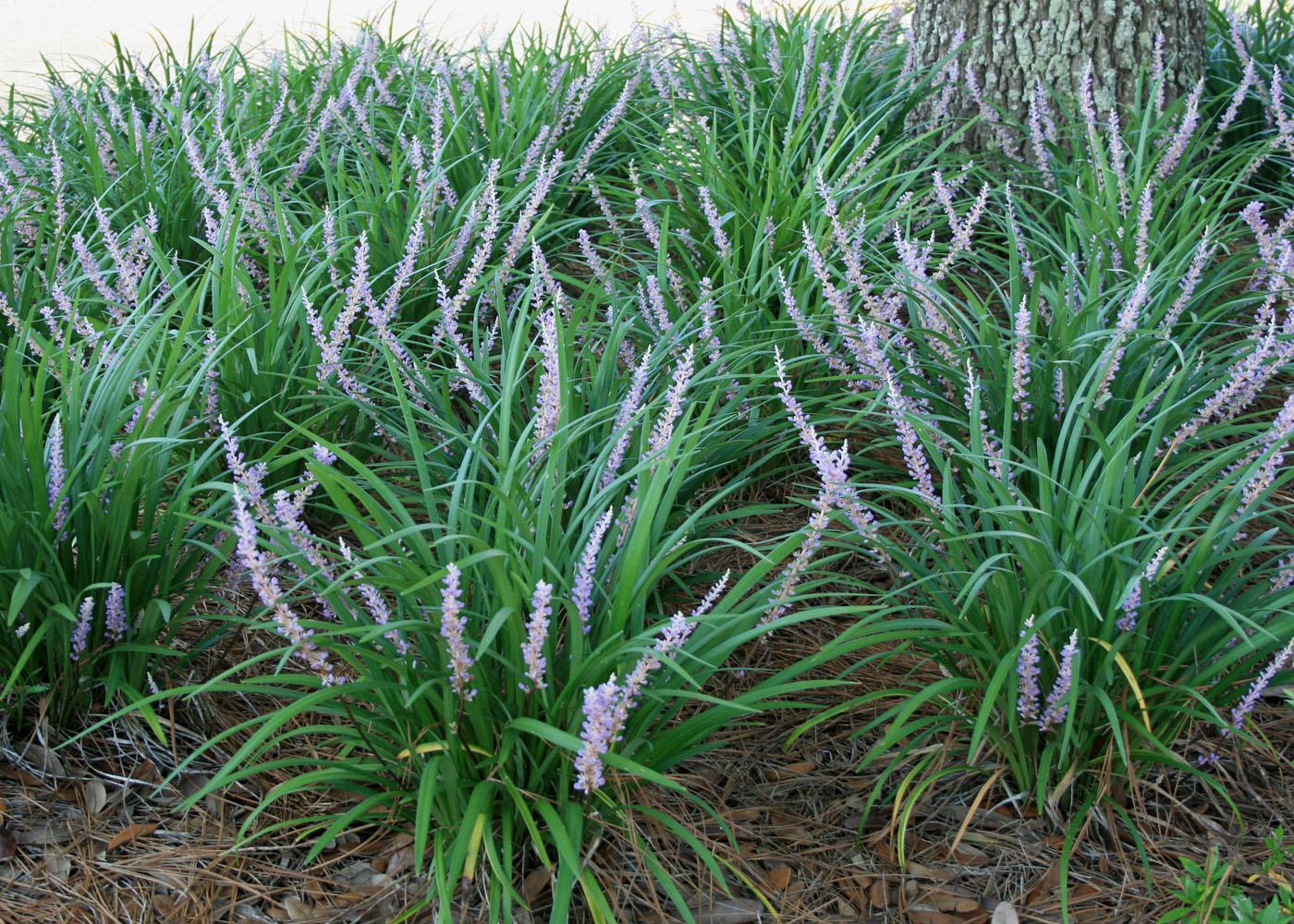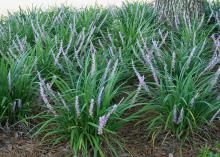Information Possibly Outdated
The information presented on this page was originally released on August 26, 2010. It may not be outdated, but please search our site for more current information. If you plan to quote or reference this information in a publication, please check with the Extension specialist or author before proceeding.
Liriope is an effective Mississippi groundcover
Liriope is an old standard when the Mississippi landscape calls for a groundcover. It is reliable in both full sun or shade, and as long as the soil is well drained, liriope will thrive in heat and drought.
Liriope is commonly known as monkeygrass or lilyturf. It is a versatile groundcover, effective under large trees where sunlight is limited or mass planted on slopes. It also creates soft borders for paved areas and foundations.
The foliage is narrow and grasslike. Individual flowers are very small and arranged on spikes, and these can bloom from July to the end of August. When in bloom, liriope is showy, as many flower spikes develop on each plant. Flowering is more intense in full sun. Flower colors vary by variety but can be purple, lavender or white. Dark purple-black, round fruit follow the flowers.
The two types of liriope commonly found in garden centers and nurseries are big blue liriope and creeping liriope. While both are called liriope, they are as different as night and day.
Big blue liriope is a well-behaved, clumping variety that will stay where you plant it. The lavender flower spikes are displayed uniformly throughout the plant clump. Because it is not aggressive, extra plants are needed for area coverage.
Consider a few varieties for your landscape. Marc Anthony is a variegated selection that is 16 inches tall and has three foliage colors. The leaves start out golden yellow and green and later mature to white and green variegation.
Cleopatra is a solid green variety that is 24 inches tall. It is perfect for creating soft walkway borders or filling containers. New Blue is a refined liriope with a fine leaf texture and huge quantities of lavender flower spikes.
Creeping liriope is a spreading groundcover that has white flower spikes. It stays contained when grown in shade, but in the sun, creeping liriope will overrun nearly everything it its path. Its aggressive root system makes it difficult to remove once established. I found this out firsthand a few years ago when I was trying to clean up a planting bed. Creeping liriope is great for contained areas, such as urban planter boxes, or on steep banks with room to roam.
Space liriope about 12 inches apart in the landscape, and the plants will readily fill in the spaces. When an area becomes overgrown, simply dig and divide every three or four years. Unlike other perennial plants, dividing creeping liriope is not required for plant health, but it is an easy way to make more plants.
The only maintenance liriope needs is to be cut back before growth starts in the spring. Clear away old foliage to allow the new growth to develop and reduce the occurrence of anthracnose. Cut it back with a string trimmer or lawn mower, being careful not to injure the crown of the plant.








